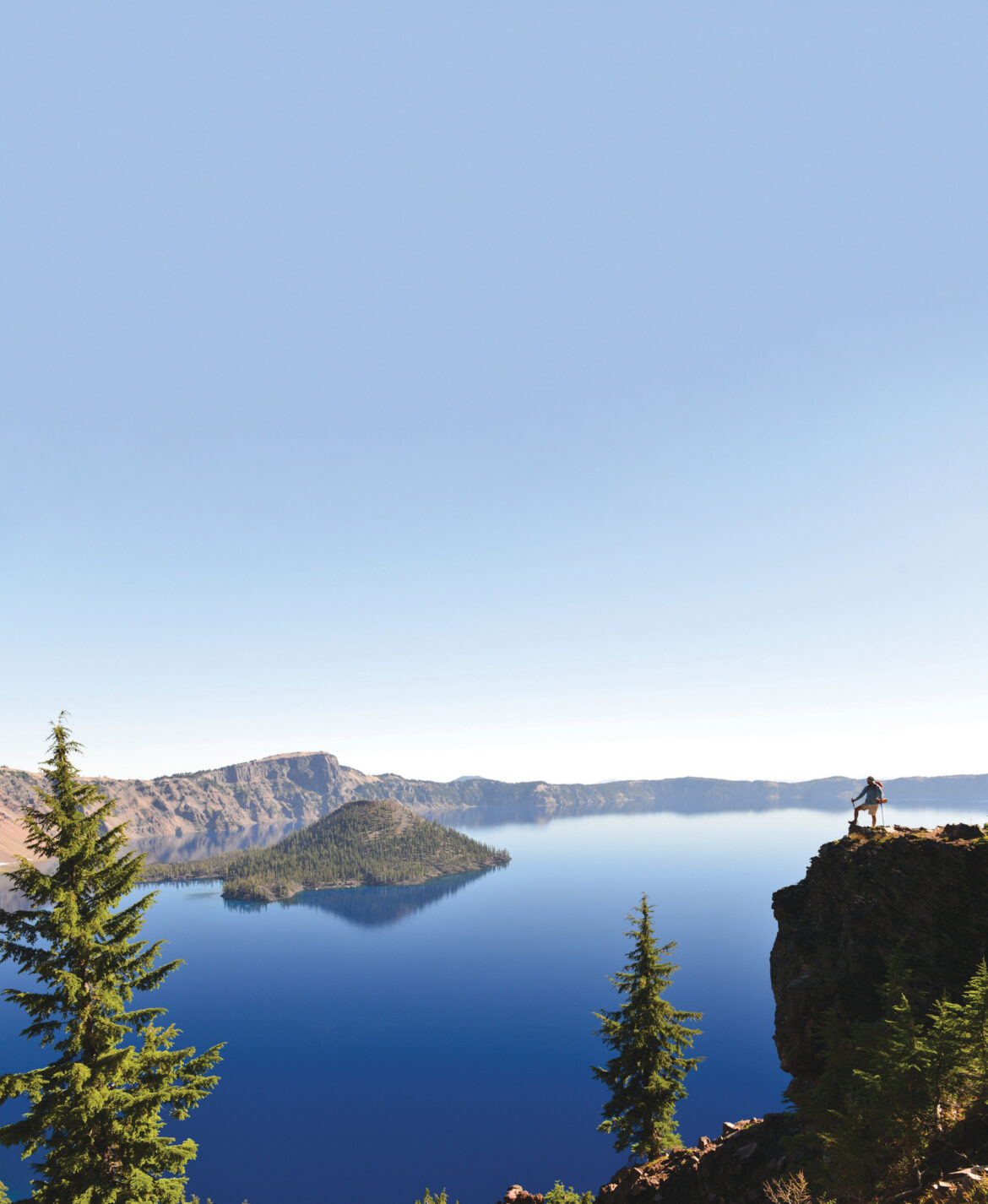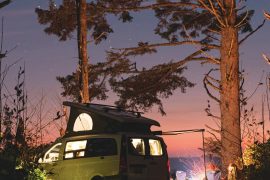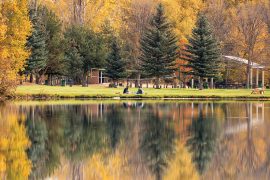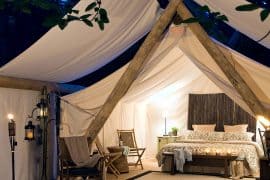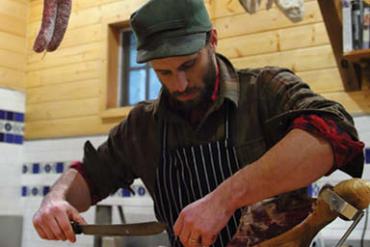The deep blue gem of the Pacific Northwest
written by Ryn Pfeuffer
It takes some work to get to Crater Lake, but, for outdoor enthusiasts, the cobalt blue waters of the largest, cleanest lake in the United States are worth it.
It’s roughly a four- to five-hour drive south of Portland, depending on your route and traffic conditions. Tack on another two to three hours if you’re coming from Seattle. Either way, it’s a scenic trip and well worth the time.
Plan to stop at Salt Creek Falls. Situated in the Willamette National Forest, approximately 58 miles southeast of Eugene, Oregon, Salt Creek Falls is a popular tourist attraction known for its impressive 286-foot-tall waterfalls. There are picnic tables and benches, so you can pack a lunch, stretch your legs, and soak up the forested landscape before continuing your trip.
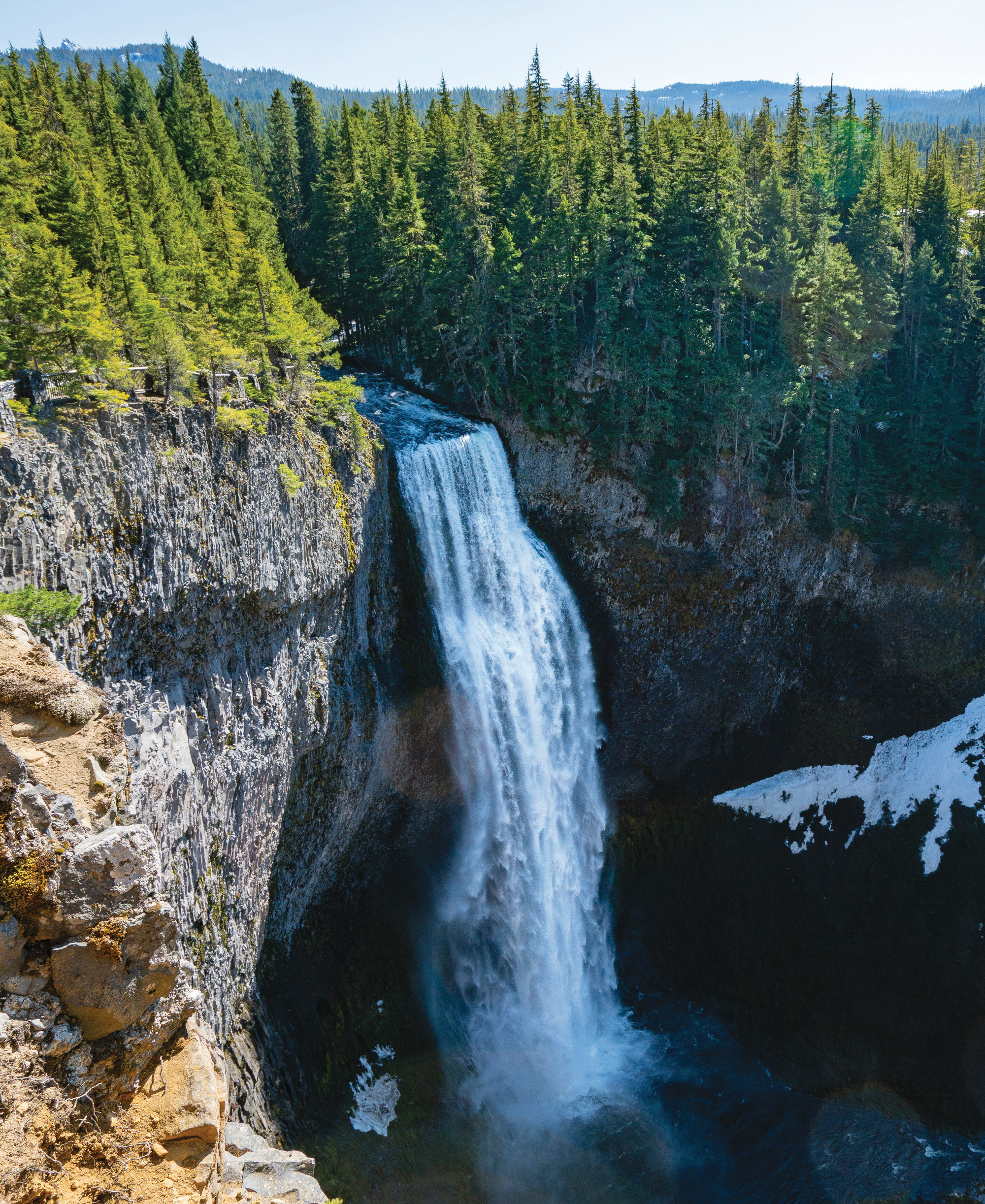
Photo by Joey Hamilton/Eugene, Cascades & Coast
Fifteen miles farther down State Highway 58, you’ll come across Crescent Lake. If you have time, hike the 5-mile Crescent Lake Trail. It’s a relatively easy loop that circles the lake, with scenic views of the lake and opportunities to access the shoreline in several spots.
If you’re approaching from the north (one of the main routes leading to Crater Lake from the north), Toketee Falls is located off State Highway 138. It’s a popular spot for photography and hiking, offering a short trail that leads to a viewpoint of the two-tiered falls. From the falls, it’s an easy two-hours-drive to your destination.
When you arrive at Crater Lake National Park, check into Mazama Campground (open only in summer). Although the 214-site campground is only open for a short window each year, it’s a gorgeous spot tucked into an old-growth forest at 6,000 feet. While there, check out the nearby Godfrey Glen Trail. This 1.5-mile loop trail takes hikers through a lush, old-growth forest with interpretive signs.
If you prefer more amenities, the charming Rustic Mountain Cabins are located along the North Umpqua River, the region of the Oregon Cascades commonly referred to as “Oregon’s Emerald-Jewel Gateway” to Crater Lake. The cabins are centrally located to the North Umpqua Trail, with easy drives to many trailheads, waterfalls, and Umpqua Hot Springs. (Pro tip: If you plan to visit the hot springs, go early, like 6 a.m. early. Otherwise, it gets crowded.)
Dining options in the area are pretty limited. Your best bet is the Crater Lake Lodge Dining Room. The historic lodge is the centerpiece of Rim Village, serves breakfast, lunch and dinner and takes reservations up to a week in advance. It also provides rustic lodging for visitors. Start with the smoked trout and spinach dip, then the pan-roasted steelhead with rice pilaf and lemon herb butter sauce. Everything pairs well with Steel’s Fireside Toddy, named for William Gladstone Steel. Known as the “Father of Crater Lake,” Steel spent much of his life lobbying for Crater Lake to be recognized as a national park. Rim Village Café and Annie Creek Restaurant and Gift Shop are also decent dining options.
Begin your Crater Lake adventures with a stop at The Rim Village Visitor Center. It serves as an information hub for visitors, providing maps, brochures and knowledgeable staff who can assist with trip planning. Exhibits and displays offer insights into the geology, history and ecology of Crater Lake National Park.
A short walk from Rim Village, the Sinnott Memorial Overlook provides a stunning view of Crater Lake. Named for Oregon Congressman Nick Sinnott who was an advocate for Crater Lake and public lands, this viewpoint offers excellent photo opportunities and interpretive panels about the lake’s formation.
During the summer, the vintage-style Crater Lake Trolley takes visitors on a guided journey around the lake, offering narrated historical and natural insights into the park’s features.
Crater Lake offers a variety of trails to explore. One of the best is the Cleetwood Cove Trail, a steep and strenuous 2.2-mile round-trip hike and the only (authorized) trail to the water. The crystal-clear water in Cleetwood Cove is cold, but not ice cold, due to its elevation and depth, but it feels refreshing during warmer summer months. Garfield Peak Trail, Watchman Peak Trail and Plaikni Falls Trail are also popular picks.
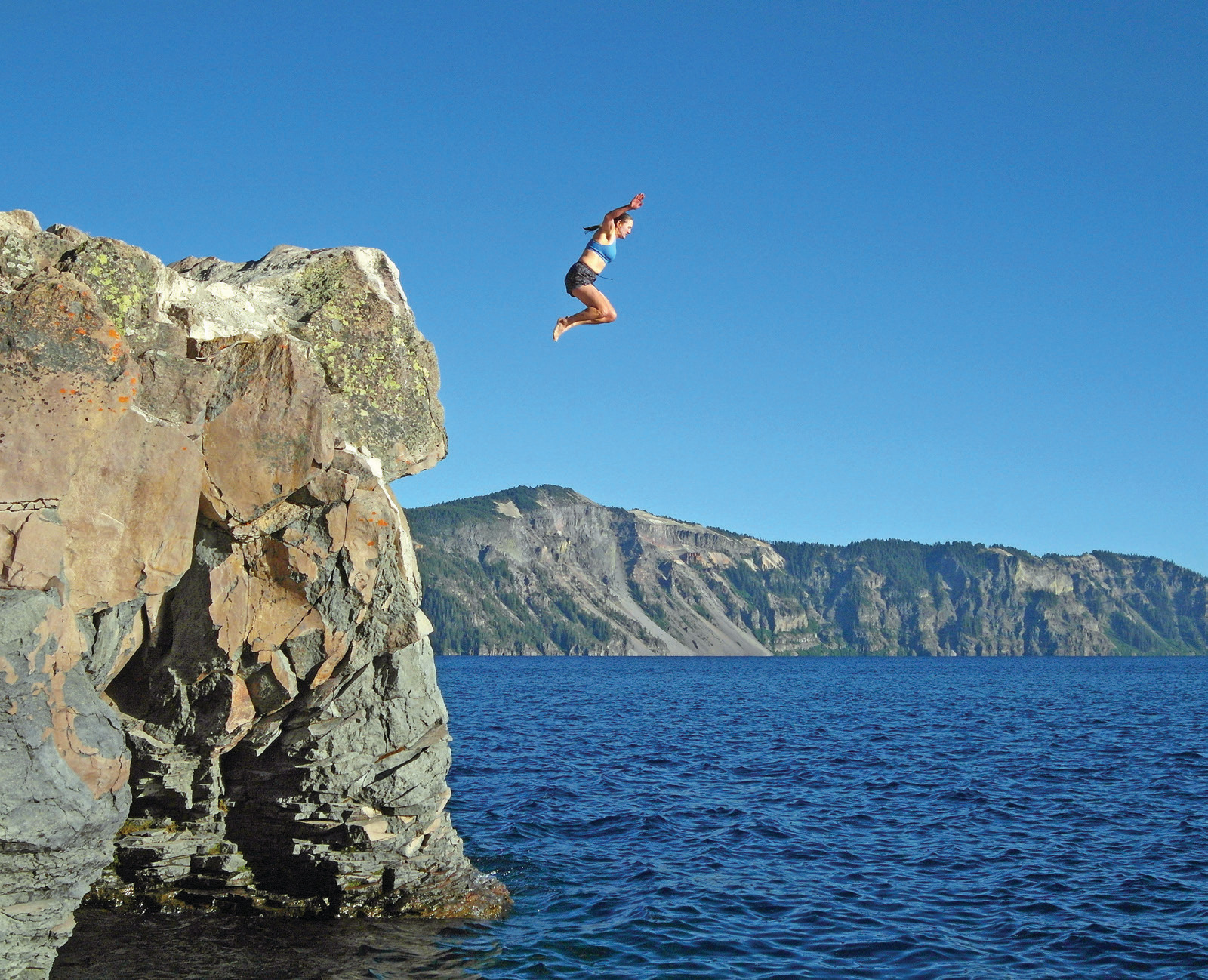
Photo by National Park Service
Since snow conditions vary from year to year, visit the park’s website at www.nps.gov/crla, and navigate to the “alerts and conditions” section to make sure roads are open and accessible.
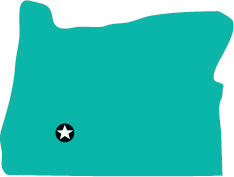
CRATER LAKE NATIONAL PARK, OREGON
EAT
Annie Creek Restaurant and Gift Shop
www.travelcraterlake.com/dining/annie-creek-restaurant
Crater Lake Lodge Dining Room
www.travelcraterlake.com/dining/crater-lake-lodge-dining-room
Rim Village Café
www.travelcraterlake.com/dining/rim-village-cafe
STAY
Mazama Campground
www.recreation.gov
Rustic Mountain Cabins
www.airbnb.com/rooms/18655100
PLAY
Cleetwood Cove Trail
www.nps.gov
Rim Village Visitor Center
www.nps.gov
Salt Creek Falls
www.fs.usda.gov
Toketee Falls
www.alltrails.com/trail/us/oregon/toketee-falls


